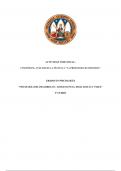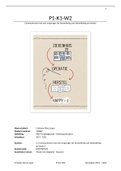Essay
Introduction to Jazz Essay, Music History (MUSC1HAH1) Blues People, ISBN: 9780688184742
Amiri Baraka (previously known as LeRoi Jones) gives a thorough introduction to jazz through his book, "Blues People." The essay summarises Baraka's message on jazz and blues in American social, musical, economic, and cultural history. The journey of Western Classical music to Jazz music is a trans...
[Show more]












